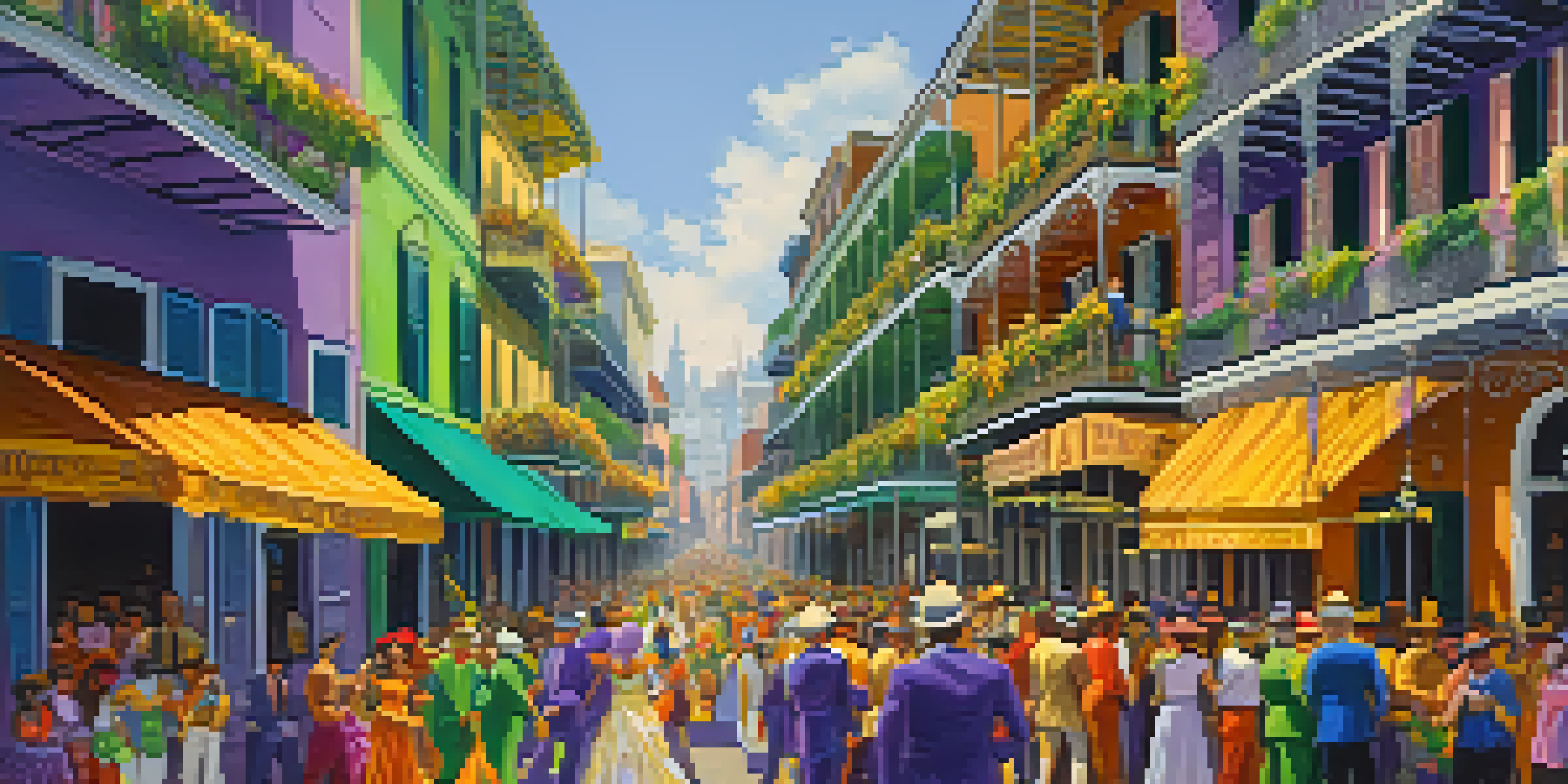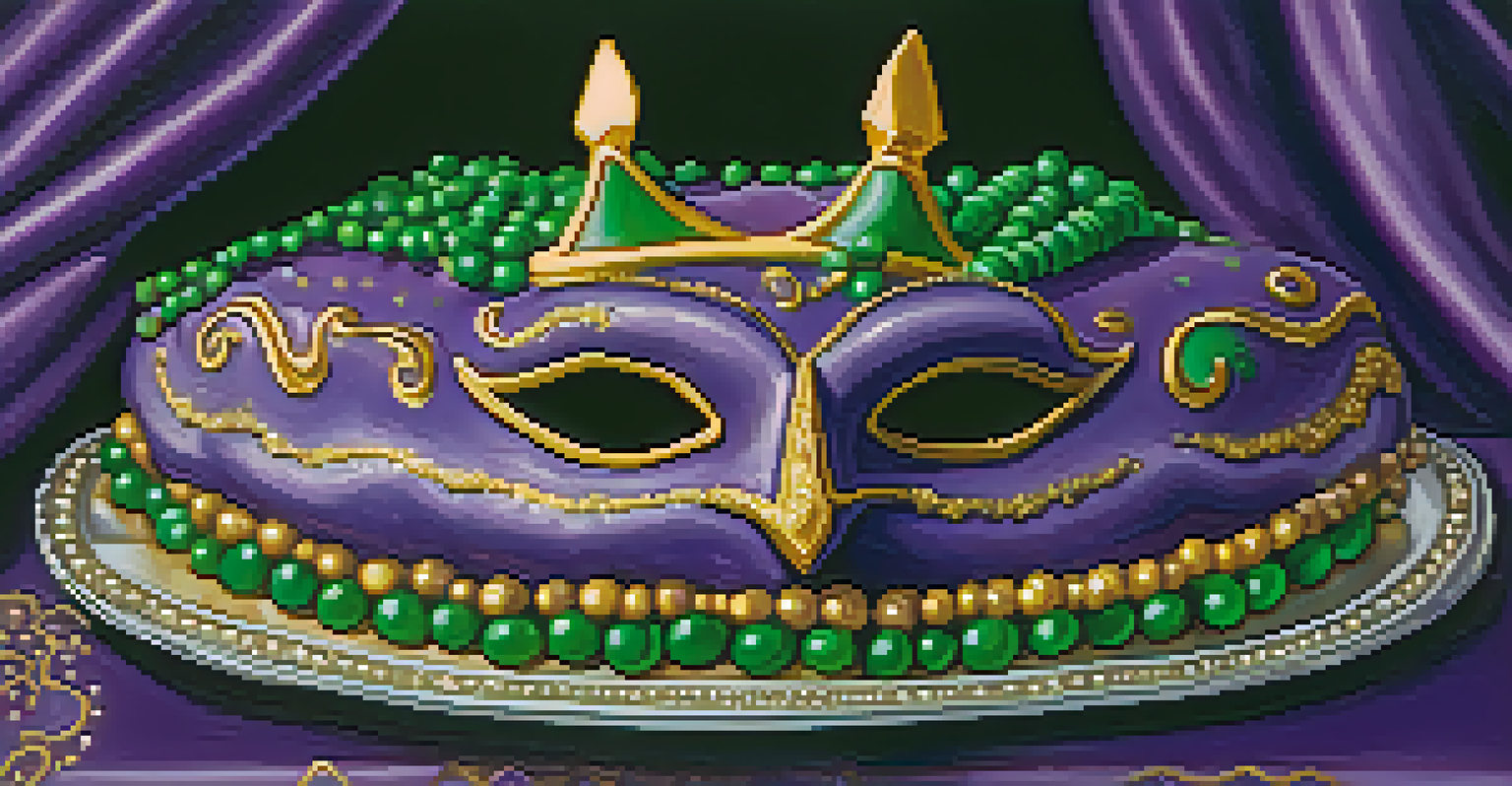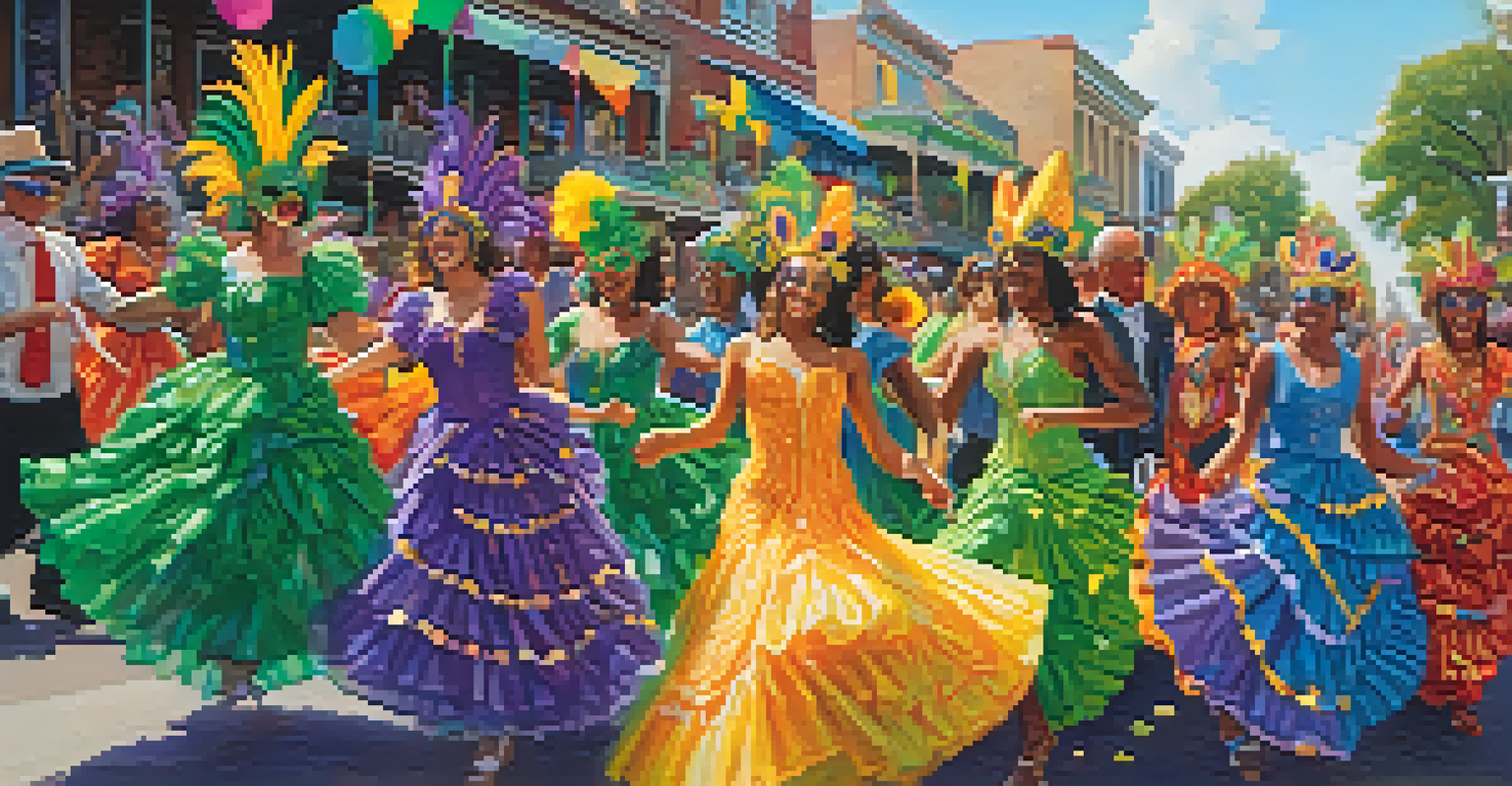The Evolution of Mardi Gras: From Past to Present

The Origins of Mardi Gras: A Historical Overview
Mardi Gras, also known as Fat Tuesday, has roots dating back to ancient pagan celebrations. The festival originally marked the end of winter and the arrival of spring, with feasts and revelry. This joyous occasion was later embraced by Christians as a day of indulgence before Lent, a period of fasting and reflection.
Mardi Gras is a celebration of life—of creativity, community, and culture.
The term 'Mardi Gras' translates to 'Fat Tuesday' in French, symbolizing the last chance to indulge before the solemnity of Lent begins. This cultural melding, combining pagan and Christian customs, laid the groundwork for the vibrant celebrations we see today. Over time, various regions adapted the festivities to reflect their local cultures and traditions.
In many ways, Mardi Gras serves as a reminder of the cyclical nature of life—balancing indulgence with restraint. As it evolved from its ancient origins, the festival became a canvas for creativity, allowing communities to express their unique identities through colorful parades, masks, and elaborate costumes.
Mardi Gras in the United States: The New Orleans Influence
When it comes to Mardi Gras in the U.S., New Orleans is undoubtedly the epicenter. The celebration arrived in the French Quarter in the early 18th century, brought by French settlers who maintained their vibrant traditions. Over the years, the festival grew in scale and complexity, with grand parades and masked balls becoming staples of the event.

New Orleans Mardi Gras isn't just a party; it's a cultural phenomenon. The city’s unique blend of French, Spanish, African, and Creole influences has given rise to distinctive traditions, such as the iconic king cake and the colorful throws of beads and trinkets. Each year, the festivities attract millions of visitors eager to immerse themselves in the lively atmosphere.
Mardi Gras Origins Blend Cultures
Mardi Gras originated from ancient pagan celebrations and evolved into a vibrant festival that combines both pagan and Christian traditions.
What sets New Orleans apart is its emphasis on community participation. From krewes, which are organizations that put on parades and balls, to local musicians and artists, the spirit of Mardi Gras thrives on collective creativity. This sense of belonging and shared joy is what keeps the tradition alive and evolving year after year.
The Role of Krewes in Shaping Mardi Gras Celebrations
Krewes play a pivotal role in the Mardi Gras experience, acting as both organizers and participants in the festivities. These social clubs often have unique themes and identities, which they showcase through their elaborate floats and costumes during parades. Each krewe adds its flavor to the celebration, making every year's event distinct and memorable.
Tradition is not the worship of ashes, but the preservation of fire.
Founded in the 19th century, krewes have become an integral part of Mardi Gras culture. They host grand balls, create intricate floats, and ensure that the spirit of revelry is upheld. Membership in a krewe often comes with a sense of pride and camaraderie, as members work together to create spectacular experiences for the public.
The competition among krewes adds an exciting edge to Mardi Gras, as they strive to outdo each other with creativity and spectacle. This rivalry fosters innovation, leading to some of the most breathtaking displays seen during the parades. Ultimately, krewes embody the community spirit that makes Mardi Gras such a cherished tradition.
Mardi Gras Traditions: Food, Music, and Costumes
One of the most delightful aspects of Mardi Gras is its rich tapestry of traditions, particularly in food, music, and costumes. The king cake, a sweet treat with a hidden figurine, symbolizes the festival's spirit of sharing and community. Those who find the figurine are often tasked with hosting the next year's king cake party, perpetuating the festive cycle.
Music is another cornerstone of Mardi Gras, with genres like jazz and zydeco filling the air. Local bands and street performers create an electrifying atmosphere that invites everyone to dance and celebrate together. The infectious rhythms are a reminder of the cultural diversity that fuels the festivities.
New Orleans: Mardi Gras Epicenter
New Orleans is the heart of Mardi Gras in the U.S., where the festival showcases a unique blend of cultural influences and community participation.
Costumes and masks are essential for capturing the essence of Mardi Gras. They allow individuals to express their creativity and embrace anonymity, adding an air of mystery to the celebrations. The vibrant colors—purple, green, and gold—represent justice, faith, and power, turning the streets into a visual feast that captivates all.
Modern Mardi Gras: Embracing Diversity and Inclusion
As Mardi Gras has evolved, it has also embraced diversity and inclusion, reflecting the rich tapestry of cultures that participate in the festivities. Today, various communities across the United States and beyond celebrate Mardi Gras with their unique interpretations, showcasing their heritage and traditions. This evolution has made the festival more inclusive, inviting everyone to join in the revelry.
In recent years, efforts have been made to highlight and celebrate the contributions of underrepresented groups in the Mardi Gras narrative. Events and parades that honor the history and culture of marginalized communities are becoming more prevalent. This shift not only enriches the overall experience but also fosters a sense of belonging for all participants.
Modern technology and social media have also played a role in this evolution, allowing people from different backgrounds to share their Mardi Gras experiences. Virtual parades and online events have emerged, connecting people globally and showcasing the festival's universal appeal. This inclusivity ensures that Mardi Gras remains a vibrant celebration for generations to come.
Environmental Impact and Sustainability Efforts in Mardi Gras
With the growing awareness of environmental issues, Mardi Gras has begun to address its ecological footprint. Many krewes and organizations are now focusing on sustainable practices, from using eco-friendly materials for floats to reducing waste generated during the festivities. These initiatives aim to preserve the celebratory spirit while being mindful of the planet.
Sustainable practices during Mardi Gras can include recycling programs, composting food waste, and opting for biodegradable products. These changes not only lessen the environmental impact but also inspire participants to be more conscious of their consumption habits. As a result, the festival is gradually transforming into an event that celebrates both joy and responsibility.
Modern Mardi Gras Embraces Inclusion
Today, Mardi Gras celebrates diversity and inclusion, inviting various communities to share their heritage and participate in the festivities.
By incorporating sustainability into the festivities, Mardi Gras can continue to thrive for generations. It serves as a reminder that tradition and progress can coexist, creating a brighter future for both the celebration and the environment. This commitment to sustainability reflects the evolving values of the communities that cherish this beloved festival.
The Future of Mardi Gras: Tradition Meets Innovation
Looking ahead, Mardi Gras is poised to continue its journey of evolution, balancing tradition with innovation. As new generations of revelers take part in the celebrations, they bring fresh ideas and perspectives that enrich the festival's legacy. This blend of old and new keeps the spirit alive and ensures that Mardi Gras remains relevant in a changing world.
Technological advancements will likely shape the future of Mardi Gras, with virtual experiences becoming more prominent. Live-streamed parades and interactive online events may allow people from around the globe to partake in the festivities, breaking geographical barriers. These innovations could create a more connected global community celebrating the joy of Mardi Gras.

Ultimately, the future of Mardi Gras will depend on the willingness of communities to adapt while honoring their cultural roots. By embracing change and welcoming diverse voices, Mardi Gras can thrive as a celebration of life, creativity, and togetherness for years to come. The possibilities are endless, and the journey is just beginning.